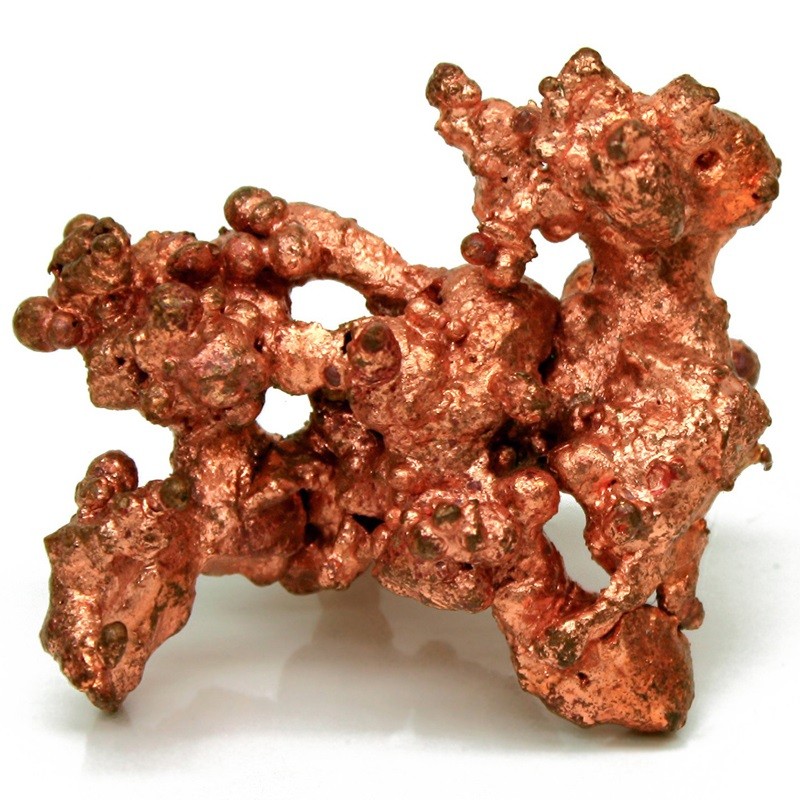Cupru
29
Cu
Grupă
11
Perioadă
4
Bloc
d
Protoni
Electroni
Neutroni
29
29
35
Proprietăți Generale
Număr atomic
29
Masă atomică
63,546
Numar de masa
64
Categorie
Metale de tranziție
Culoare
Cupru
Radioactive
Nu
Din cuvântul latin cuprum, de la insula Ciprului
Structură cristalină
Față Centrată Cubic
Istoric
Cuprul apare în mod natural ca și cupru nativ și era cunoscut unora dintre cele mai vechi civilizații înregistrate.
Primele estimări ale descoperirii cuprului sugerează în jurul anului 9000 î.Hr. în Orientul Mijlociu.
A fost unul dintre cele mai importante materiale pentru oameni de-a lungul epocilor cuprului și bronzului.
Primele estimări ale descoperirii cuprului sugerează în jurul anului 9000 î.Hr. în Orientul Mijlociu.
A fost unul dintre cele mai importante materiale pentru oameni de-a lungul epocilor cuprului și bronzului.
Electroni pe nivelul de energie
2, 8, 18, 1
Configurație electronică
[Ar] 3d10 4s1
Cuprul pur este portocaliu-roșu și capătă o pată roșiatică când este expus la aer
Proprietăți Fizice
Fază
Solid
Densitate
8,96 g/cm3
Punct de topire
1357,75 K | 1084,6 °C | 1984,28 °F
Punct de fierbere
2835,15 K | 2562 °C | 4643,6 °F
Energie de fuziune
13,1 kJ/mol
Energie de evaporare
300 kJ/mol
Căldură specifică
0,385 J/g·K
Abundența în scoarța Pământului
0,0068%
Abundența în Univers
6×10-6%

Numarul CAS
7440-50-8
Număr CID PubChem
23978
Proprietăți Atomice
Rază atomică
128 pm
Rază de covalență
132 pm
Electronegativitate
1,9 (Scara lui Pauling)
Potențial de ionizare
7,7264 eV
Volum molar
7,1 cm3/mol
Conductivitate termică
4,01 W/cm·K
Număr de oxidare
1, 2, 3, 4
Aplicații
Cuprul este adesea folosit pentru aplicații de cablaj electric și pentru instalații sanitare casnice.
Sulfatul de cupru este folosit ca fungicid și ca algicid în râuri, lacuri și iazuri.
Este de asemenea folosit în vase de gătit și ustensile de bucătărie.
Aliaje importante comercial precum alama și bronzul sunt făcute cu cupru și alte metale.
Sulfatul de cupru este folosit ca fungicid și ca algicid în râuri, lacuri și iazuri.
Este de asemenea folosit în vase de gătit și ustensile de bucătărie.
Aliaje importante comercial precum alama și bronzul sunt făcute cu cupru și alte metale.
Gătitul alimentelor acide în oale de cupru poate cauza toxicitate
Izotopi
Izotopi stabili
63Cu, 65CuIzotopi instabili
52Cu, 53Cu, 54Cu, 55Cu, 56Cu, 57Cu, 58Cu, 59Cu, 60Cu, 61Cu, 62Cu, 64Cu, 66Cu, 67Cu, 68Cu, 69Cu, 70Cu, 71Cu, 72Cu, 73Cu, 74Cu, 75Cu, 76Cu, 77Cu, 78Cu, 79Cu, 80Cu